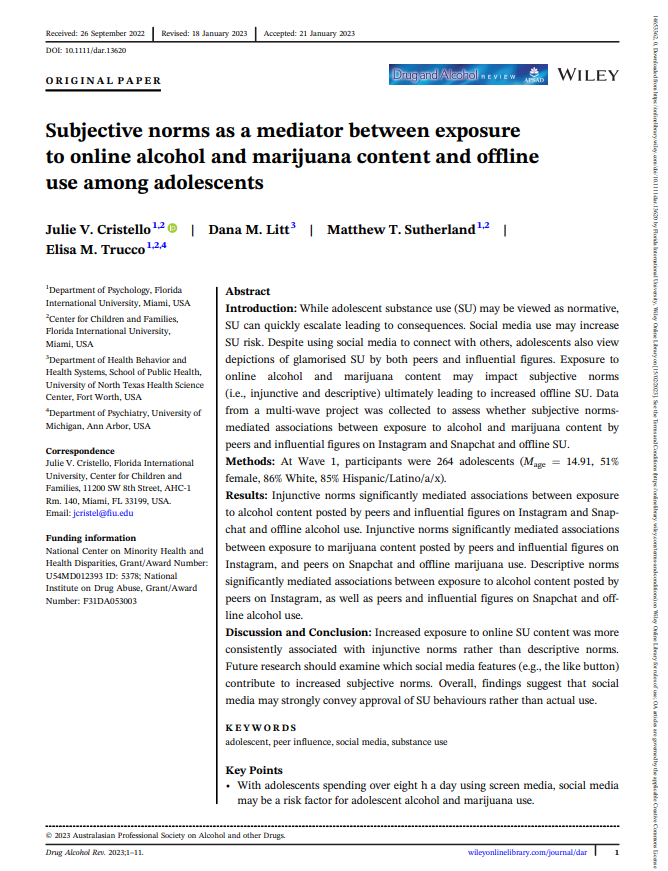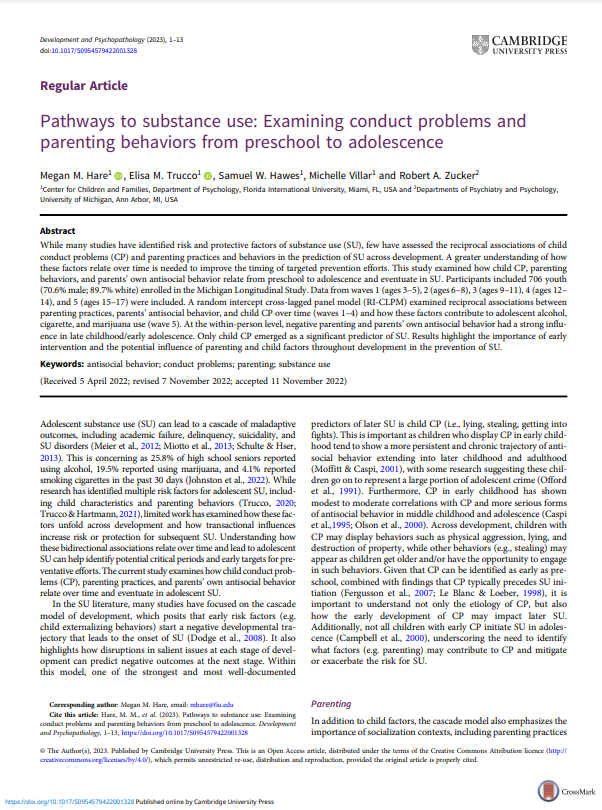
Current Projects & Findings

Antecedents and Consequences of Electronic Nicotine Delivery Systems in Underrepresented Youth
National Institute on Minority Health and Health DisparitiesSmoking remains the leading cause of preventable disease and death in the US. Although rates of cigarette use are decreasing, e-cig use is increasing at a rapid pace, especially among Hispanic/Latina(o) youth. A focus on this population is timely and urgent as this is the largest and most rapidly growing minority group in the country. Identifying malleable factors that contribute to vaping among Hispanic/Latina(o) youth that can be leveraged to prevent disease may help avert health disparities. This project will identify factors that influence the onset of vaping among adolescents and determine whether e-cig use leads to greater use of other substances. We will also examine whether e-cig use has a negative impact on brain functioning and structure using neuroimaging.

Environment, Genes, and Temperament on the Development of Alcohol Use Disorder
National Institute on Alcohol Abuse and AlcoholismThis project aims to redress gaps in the current alcohol use disorder field by advancing an interdisciplinary program of research on genes, social contexts, and personality factors underlying adolescent alcohol use using two large longitudinal datasets (the Michigan Longitudinal Study and the National Longitudinal Study of Adolescent to Adult Health). State-of-the-art quantitative methods will examine the role of genetics on the development of problematic substance use from childhood to early adulthood. Students in the ReACH Lab will have access not only to these comprehensive datasets to advance their own program of research, they will also have opportunities to collaborate with leading experts in the field of developmental psychopathology, addiction, psychiatric genetics, and temperament.
Publications
Paper Presentations
Poster Presentations
Recent Findings
Subjective norms as a mediator between exposure to online alcohol and marijuana content and offline use among adolescents
A new study conducted by ReACH Lab Graduate Student Julie V. Cristello, alongside ReACH Lab Director and ACE-Project Co-PI Dr. Elisa Trucco, ACE Project Co-PI Dr. Matthew Sutherland, and Dr. Dana M. Litt, explored the effects that social media had on adolescent substance use. It further explained how while adolescent substance use (SU) may be viewed as normative, SU can quickly escalate leading to consequences. Social media use may increase SU risk, as adolescents now spend over eight hours a day on screen media. Despite using social media to connect with others, adolescents also view depictions of glamorized SU (text or images) by both peers and influential figures. Exposure to online alcohol and marijuana content may impact subjective norms (i.e., injunctive or perceptions of approval and descriptive or perceptions of use) ultimately leading to increased offline SU. Data from a multi-wave project was collected to assess whether subjective norms mediated associations between exposure to alcohol and marijuana content by peers and influential figures on Instagram and Snapchat and offline SU. At Wave 1, participants were 264 adolescents (Mage = 14.91, 51% Female, 86% White, 85% Hispanic/Latino/a/x). Findings suggest that increased exposure to online alcohol and marijuana content was more consistently associated with injunctive norms, or perceptions of approval, than descriptive norms, or perceptions of use. Future research should examine which social media features (e.g., the like button) contribute to increased subjective norms. Overall, findings suggest that social media may strongly convey approval of SU behaviors rather than actual use.
Alexithymia Mediates the Association between Childhood Trauma and Adolescent E-Cigarette Use
A new study conducted by ACE Project Graduate Assistants Benjelene Sutherland and Nilofar Fallah-Sohy, alongside ReACH Lab Director and ACE-Project Co-PI Dr. Elisa Trucco and ACE Project Co-PI Dr. Matthew Sutherland, explored the mediating effects of alexithymia (i.e., difficulties identifying and describing feelings) on the relationship between childhood maltreatment and e-cigarette use. Using data from the ongoing ACE Project, results found that emotional abuse and neglect predicted difficulty describing feelings, which in turn predicted e-cigarette use. Results may indicate that, due to the oftentimes social context of vaping, adolescents who experience difficulty describing feelings may vape to connect with peers. It may also be that the nicotine effects in the brain, which may serve to improve verbalization of emotions, may lead adolescents who are limited in describing their feelings as a result of prior adverse experiences to vape as a way to connect emotionally with others and emotions within themselves.
Pathways to substance use: Examining conduct problems and parenting behaviors from preschool to adolscence
A new study conducted by ReACH Lab Graduate Student Megan M. Hare, alongside Samuel W. Hawes, Michelle Villar, Robert A. Zucker, and ReACH Lab Director Dr. Elisa Trucco, examined how child conduct problems (CP), parenting behaviors, and parents’ own antisocial behavior relate from preschool to adolescence and eventuate in substance use. Participants included 706 youth enrolled in the Michigan Longitudinal Study. A random intercept cross-lagged panel model (RI-CLPM) examined reciprocal associations between parenting practices, parents’ antisocial behavior, and child CP over time (waves 1-4) and how these factors contribute to adolescent alcohol, cigarette, and marijuana use (wave 5). At the within-person level, negative parenting and parents’ own antisocial behavior had a strong influence in late childhood/early adolescence. Only child CP emerged as a significant predictor of substance use. Results highlight the importance of early intervention and the potential influence of parenting and child factors throughout development in the prevention of SU.



